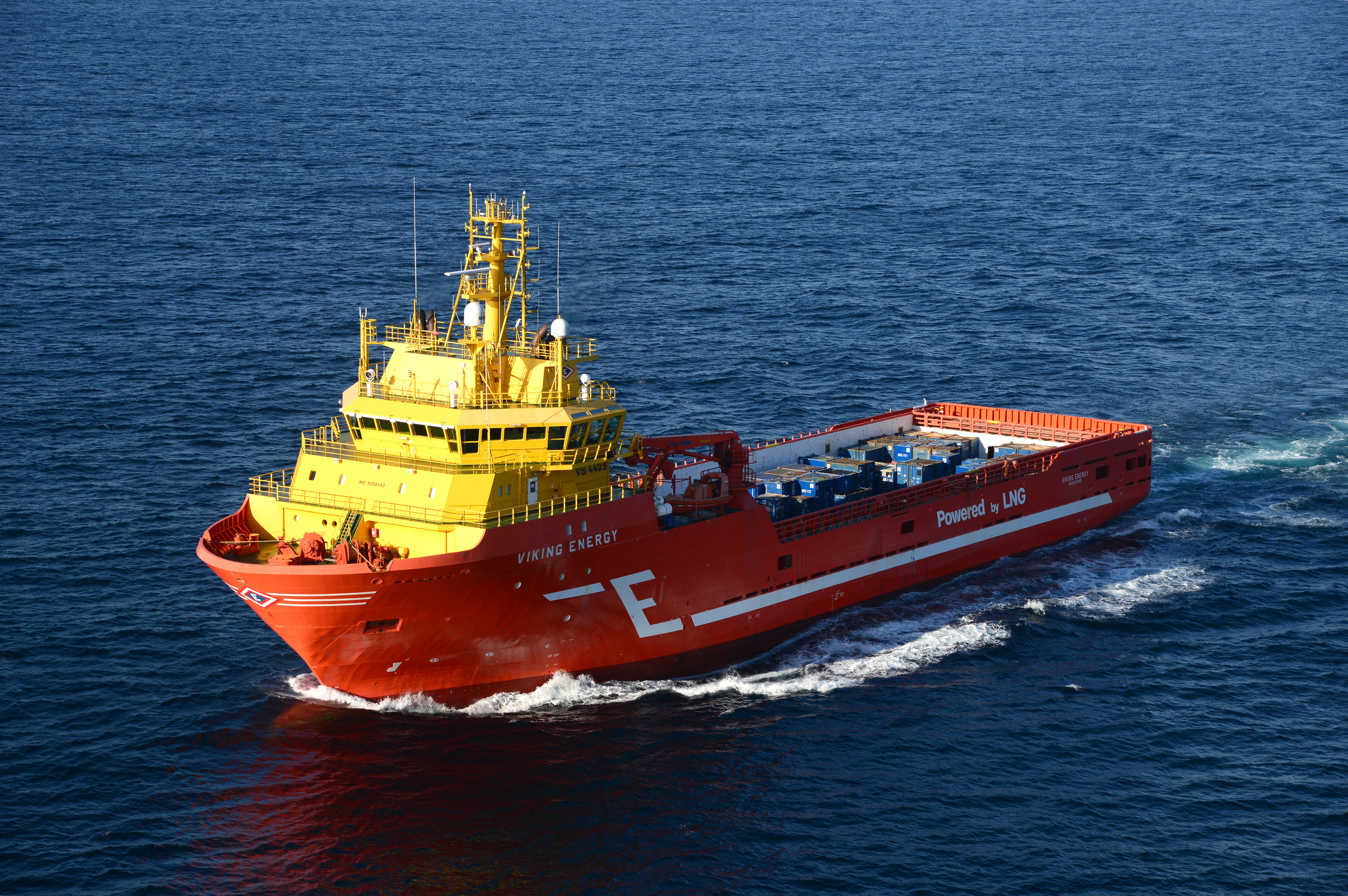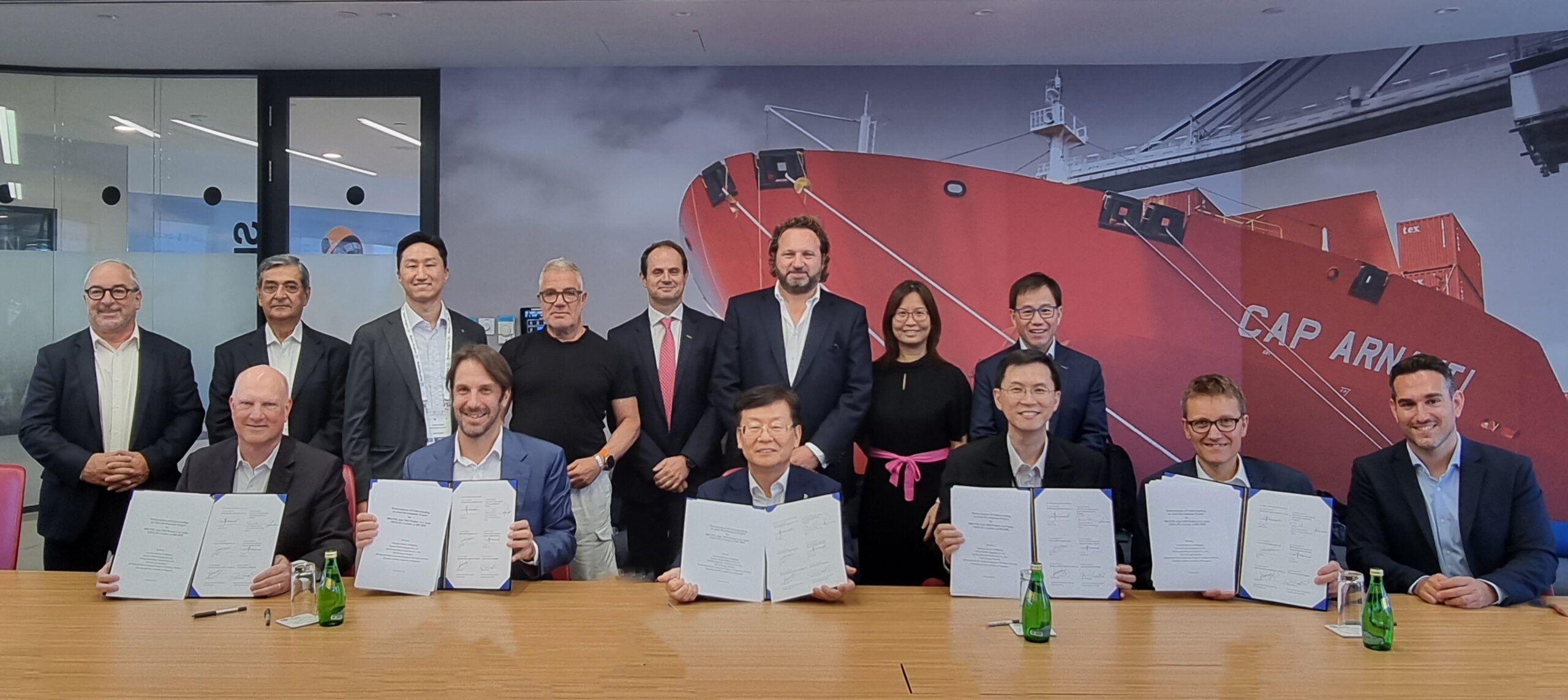Press Release: The ShipFC project is being run by a consortium of 14 European companies and institutions, co-ordinated by the Norwegian cluster organisation NCE Maritime CleanTech, and has been awarded backing from the EU’s Research and Innovation programme Horizon 2020 under its Fuel Cells and Hydrogen Joint Undertaking (FCH JU).
The project will see an offshore vessel, Viking Energy, which is owned and operated by Eidesvik and on contract to energy major Equinor, have a large 2MW ammonia fuel cell retrofitted, allowing it to sail solely on the clean fuel for up to 3,000 hours annually. As such the project will demonstrate that long-range zero-emission voyages with high power on larger ships is possible.
The goal is also to ensure that a large fuel cell can deliver total electric power to shipboards systems safely and effectively. This is the first time an ammonia-powered fuel-cell will be installed on a vessel. A significant part of the project will be the scale up of a 100-kilowatt fuel cell to 2 megawatts. The fuel cell is tested on land in a parallel project and development and construction will be undertaken by Prototech. Testing will be executed at the Sustainable Energy Norwegian Catapult Centre. The ship-side ammonia system will be supplied by Wärtsilä.
The ammonia fuel cell system will be installed in Viking Energy in late 2023.
Enhancing collaboration
The project represents the latest stage in the long running collaboration between Equinor, Eidesvik and Wärtsilä. The three companies successfully collaborated on a number of environmental and cleantech projects over the years. Viking Energy was the first LNG powered ocean-going vessel in 2003, and Eidesvik and Wärtsilä also collaborated on the 2009-built Viking Lady, another LNG-fuelled vessel that was seen as a milestone in the transition of shipping with its installation of fuel cells and marine batteries.
Eidesvik President & Chief Executive Jan Fredrik Meling said: “This is a result of hard work over time as we have continued to collaborate with Equinor on transformative projects. We are proud to be pioneers when it comes to introducing new energy carriers and fuels into the industry. This project to install the world’s first ammonia-powered fuel cell will help us continue our journey towards a decarbonized future and help maintain our competitive role”.
As an energy major and charterer of offshore vessels, energy group Equinor has set itself a high standard when it comes to investing in the future. “We see projects such as the ShipFC conversion to use ammonia on a high-powered marine fuel cell as an important step in finding the right sustainable and clean solutions in the future. Our ongoing collaboration with Eidesvik is testament to a long- standing belief that we can achieve our goals by working constructively towards that vision,” says Senior Vice President for Joint Operations Support in Equinor, Cecilie Rønning.
Norwegian crop nutrition company Yara has been contracted to supply the green ammonia which will be produced by electrolysis and delivered to Viking Energy containerised to enable easy and safe refuelling.
Another part of the ShipFC project will perform studies on three other vessel types, namely offshore construction vessels and two cargo vessel types, to illustrate the ability to transfer this technology to other segments of the shipping industry.
NCE Maritime Cleantech cluster chief executive Hege Økland says that this project represents another step in the right direction as shipping seeks ways to utilise new technologies and fuels to decarbonise. “Shipping has agreed to the goal of decarbonising by the end of the century and to have achieved a global 50% cut by 2050 based on 2008 levels. As we move onto the right trajectory to achieve these targets, we see interest in new fuels such as ammonia and hydrogen increasing. Ammonia is an abundant energy source and can easily be made from renewable resources making it one of the fuels that will likely meet part of shipping’s future energy demand.”
The director of the FCH2 JU said: “Fair wind to the ShipFC project as it trials the route of maritime decarbonisation with green ammonia as a fuel and Solid Oxide Fuel Cell as a powertrain. It thus complements the portfolio of maritime projects supported by FCH2 JU: MARANDA and FLAGSHIPS, which use hydrogen as a fuel and Proton Exchange Membrane Fuel Cells”.

































